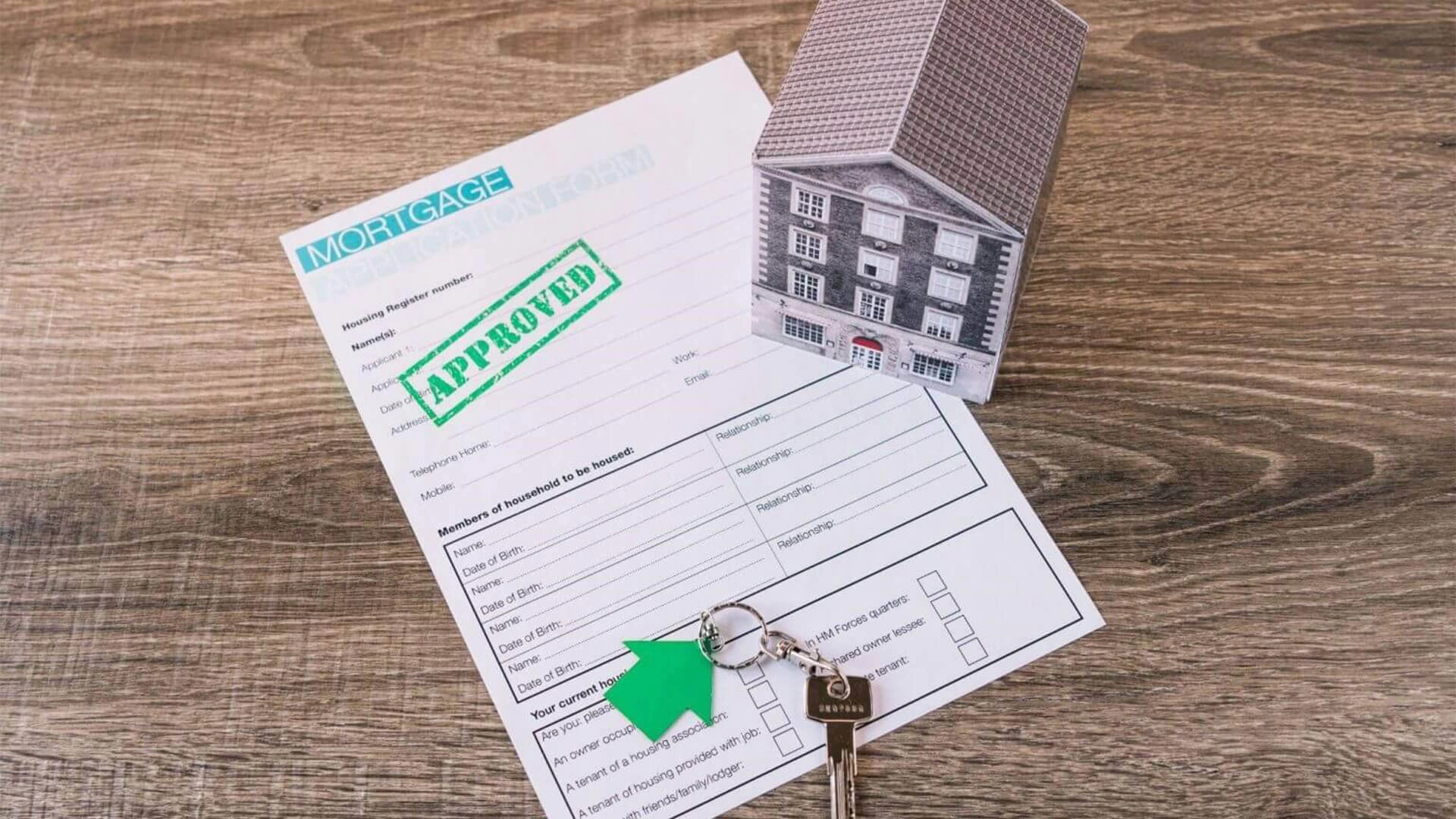Table of Content
- 1. Introduction: What is a Home Loan Sanction Letter?
- 2. Why is a Home Loan Sanction Letter Important?
- 3. The Home Loan Sanction Process
- 4. Components of a Home Loan Sanction Letter
- 5. Validity of a Home Loan Sanction Letter
- 6. Difference Between a Sanction Letter and a Disbursement Letter
- 7. How to Use a Home Loan Sanction Letter?
- 8. Why Might a Home Loan Be Rejected After Sanction?
- 9. Tips for Getting a Home Loan Sanction Letter Easily
- 10. How to Calculate Your Home Loan EMI After Sanction?
- 11. Common Mistakes to Avoid When Applying for a Home Loan Sanction Letter
- Conclusion
1. Introduction: What is a Home Loan Sanction Letter?
A home loan sanction letter is an official document issued by a lender (bank or financial institution) that indicates approval for your home loan application. It outlines the details of the loan that has been sanctioned, including the loan amount, interest rate, loan tenure, and other terms and conditions. However, a sanction letter is not a final loan approval—it is the lender’s conditional offer, subject to further documentation and verification.
Key Features of a Home Loan Sanction Letter:
- Not a final loan disbursement.
- Outlines the loan amount, rate of interest, and tenure.
- Contains terms and conditions for availing the loan.
- Valid for a limited period (usually 6 months).
2. Why is a Home Loan Sanction Letter Important?
A home loan sanction letter is vital because it provides clarity to both the borrower and the lender. It acts as a preliminary confirmation that the lender has agreed to provide a loan after reviewing the applicant’s financial health and creditworthiness. Here’s why it’s important:
- Assurance to Borrower: A sanction letter gives borrowers confidence that they will receive the funds needed for purchasing their property.
- Assurance to Seller/Builder: Sellers or builders may require this letter before proceeding with the sale.
- Rate Lock-In: Some banks may offer a rate lock-in feature within the sanction letter, which can protect borrowers from rising interest rates.
- Helps in Financial Planning: It helps the borrower plan their budget and manage their finances accordingly.
3. The Home Loan Sanction Process
Before receiving a home loan sanction letter, several steps need to be completed. Here’s a detailed breakdown of the process:
3.1. Home Loan Application Submission
- The first step involves submitting a formal application to the lender with details about the borrower’s financial standing, income, employment, and the property to be purchased.
- Along with the application, the borrower needs to submit important documents like:
- Identity proof (Aadhaar, PAN)
- Address proof
- Income proof (salary slips, IT returns)
- Property documents
3.2. Verification Process
- After the application is submitted, the lender verifies the documents. This includes verifying the borrower’s credit score, employment details, and property valuation.
- The lender may also request further documentation during this stage to assess the borrower’s financial capability.
3.3. Approval and Sanction
- Once the verification is completed successfully, the lender decides whether to approve the loan. If approved, the lender issues a home loan sanction letter.
- The loan amount, interest rate, tenure, and other terms are determined based on the borrower’s profile and creditworthiness.
Also Read: 10 Saving Strategies for First-Time Homebuyers
3.4. Final Disbursement
- Receiving a sanction letter does not mean immediate disbursement. Once the borrower accepts the terms in the sanction letter and submits all required documentation, the lender proceeds to disburse the loan.
4. Components of a Home Loan Sanction Letter
The home loan sanction letter contains several critical details that outline the structure of the loan. Here’s a breakdown of the key components:
|
Component |
Details |
|
Loan Amount Sanctioned |
The amount the lender agrees to disburse based on the borrower’s eligibility. |
|
Interest Rate |
The interest rate applicable (fixed/floating) during the tenure of the loan. |
|
Loan Tenure |
The period within which the borrower must repay the loan (e.g., 15, 20 years). |
|
EMI |
The Equated Monthly Installment (EMI) that the borrower will need to pay. |
|
Loan Conditions |
Specific conditions the borrower must fulfill to receive the loan disbursement. |
|
Processing Fees and Charges |
Fees associated with the processing of the loan, which could be deducted from the loan amount. |
|
Validity of the Letter |
The period (usually 6 months) during which the sanction letter is valid. |
5. Validity of a Home Loan Sanction Letter
A home loan sanction letter is not valid indefinitely. It typically has a validity period ranging from 3 to 6 months, depending on the lender. If the borrower does not complete the required documentation or fulfill other conditions within this period, the sanction may lapse, and the borrower might have to reapply for the loan.
It is crucial to complete all formalities within this timeframe to avoid delays in disbursement.
6. Difference Between a Sanction Letter and a Disbursement Letter
Many borrowers confuse the home loan sanction letter with a disbursement letter. However, these two documents are distinct.
|
Aspect |
Sanction Letter |
Disbursement Letter |
|
Purpose |
Indicates approval of the loan. |
Confirms the actual release of funds. |
|
Issued When |
After the loan is approved but before documentation. |
After all conditions are fulfilled and documentation is completed. |
|
Validity |
Limited validity (3-6 months). |
No validity period. Funds are disbursed directly to the seller. |
7. How to Use a Home Loan Sanction Letter?
Once you receive your home loan sanction letter, here’s what you should do:
- Review the Terms: Make sure to go through the terms and conditions mentioned in the sanction letter thoroughly.
- Contact the Seller/Builder: If you're buying a property, inform the seller/builder about the loan sanction. Some may require the sanction letter before proceeding with the sale.
- Submit Necessary Documentation: Complete any additional formalities requested by the lender, such as legal verification or property valuation.
- Final Approval and Disbursement: Once all terms are agreed upon and documentation is completed, the bank will disburse the loan.
Also Read: How to Obtain a Home Loan After Prior Rejection: A Comprehensive Guide
8. Why Might a Home Loan Be Rejected After Sanction?
While a home loan sanction letter offers provisional approval, there are still a few instances where the loan might be rejected post-sanction:
- Change in Financial Status: If there’s a sudden drop in the borrower’s income, employment, or credit score, the lender may revoke the sanction.
- Discrepancy in Property Documents: If the legal verification of the property reveals issues like disputes or unclear titles, the loan might not be disbursed.
- Failure to Provide Documents: If the borrower fails to provide necessary documentation within the validity period, the sanction can be canceled.
9. Tips for Getting a Home Loan Sanction Letter Easily
Here are some tips to improve your chances of getting a home loan sanction letter smoothly:
- Maintain a Good Credit Score: A high credit score (above 750) increases your chances of quick approval.
- Ensure a Stable Income: Lenders prefer applicants with a steady job or stable income.
- Clear Existing Loans: Try to clear any outstanding loans or reduce your debt-to-income ratio before applying.
- Provide Complete Documentation: Submit all required documents without errors or discrepancies.
- Choose the Right Lender: Research and choose a lender with good reviews and favorable terms.
10. How to Calculate Your Home Loan EMI After Sanction?
Once you have the home loan sanction letter, you can calculate your EMI (Equated Monthly Installment) using an EMI calculator available online. Here’s how it works:
|
Input Required |
Details |
|
Loan Amount |
The amount mentioned in the sanction letter. |
|
Interest Rate |
The interest rate (fixed or floating) sanctioned by the lender. |
|
Loan Tenure |
The period (in years) over which the loan is to be repaid. |
|
EMI Output |
The calculator will provide you with the monthly EMI amount. |
This will help you plan your finances better and ensure timely repayment of your loan.
11. Common Mistakes to Avoid When Applying for a Home Loan Sanction Letter
To avoid any delays or rejections in getting a home loan sanction letter, make sure you avoid the following mistakes:
- Inconsistent Documentation: Ensure that your documents are consistent and error-free.
- Low Credit Score: If your credit score is below 750, it may affect your chances of loan approval.
- Incomplete Information: Double-check your application form to ensure all sections are filled out correctly.
- Not Checking Eligibility: Use a home loan eligibility calculator before applying to see if you qualify.
Conclusion
A home loan sanction letter is a vital step in the process of securing a home loan. It provides provisional approval for your loan and helps you move forward with your property purchase. Understanding the key components, the process of application, and how to use the sanction letter effectively can help you avoid delays and ensure a smooth home loan journey.
Whether you are a first-time homebuyer or upgrading to a bigger property, having the right information about your home loan sanction letter can significantly ease your path to homeownership.
Also Read: Pros and Cons of Home Equity Loans in India: A Homeowner’s Guide



_1758715186.webp)



_1767683336.webp)




Ans 1. A home loan sanction letter is an official document issued by the lender indicating provisional approval of your home loan based on your financial credentials. It specifies the loan amount, interest rate, and other terms and conditions.
Ans 2. o, a home loan sanction letter is a provisional approval of the loan. Final loan approval and disbursement happen after all documents are verified and additional conditions (if any) are met.
Ans 3. A home loan sanction letter is generally valid for 3 to 6 months, depending on the lender. You must fulfill the conditions and submit documents within this period to avoid the loan sanction lapsing.
Ans 4. Yes, if there are changes in your financial status, discrepancies in property documents, or if required documentation is not provided within the validity period, the loan could be rejected even after the sanction letter is issued.
Ans 5. After receiving the sanction letter, you should review the terms, inform the seller/builder, submit any additional required documents, and proceed with the legal verification process for disbursement.